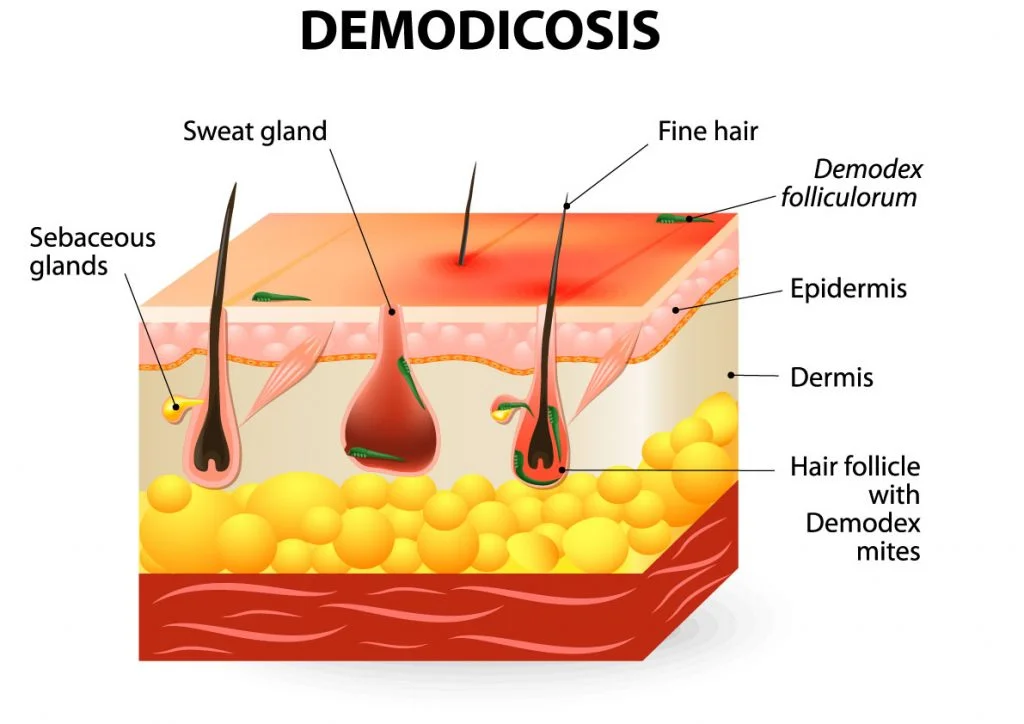
You may not know this, but your face plays host to microscopic mites that mate on your skin while you sleep. Undercover of the night, these tiny creatures leave your pores to find mates, do the deed, and lay eggs. Newly published research shows that the mites you never knew existed, also known as Demodex folliculorum, are headed for extinction, and that could spell trouble for your skin.
Soap and Water Have No Power Here
Naturally, your first inclination upon hearing that mites have set up shop on your face is probably to wash or scrub your skin—don’t bother. Demodex folliculorum live so deep inside your pores that they can’t be washed away.
And even if you could, you may not want to.
In all probability, these tiny creatures have been living in your skin since you were born (they’re often passed from mother to baby while breastfeeding), and the relationship between them and us is symbiotic. These little guys live on our bodies our entire lives and perform a crucial function on our bodies—they clean our pores.
While Demodex folliculorum was once blamed for common skin conditions like acne and rosacea, it turns out that these guys could be the key to healthier skin. Instead of wreaking havoc on your skin, they essentially function as a microscopic cleanup crew, dining on dead skin cells and pore-clogging oils on your face and in your hair follicles. That’s the good news.
The Days of Demodex Folliculorum Are Numbered
 What’s the bad news? In a recent study published in the journal Molecular Biology and Evolution, researchers have found that the genome of the Demodex folliculorum is eroding.
What’s the bad news? In a recent study published in the journal Molecular Biology and Evolution, researchers have found that the genome of the Demodex folliculorum is eroding.
The mites have become so dependent on human hosts that their genes have been stripped down to the bare minimum necessary for survival.
Dr. Henk Braig, a co-lead author of the new study, says, “All genomes need maintenance. Demodex is losing some of the genes codings for repair enzymes. If this continues, the genome will degrade more and more. At the same time, no undamaged genes are entering the genome anymore because, with the change from horizontal to vertical transmission, Demodex is becoming less and less contagious. Different Demodex no longer meet.”
The takeaway: The loss of DNA repair genes and extreme inbreeding have ultimately set Demodex folliculorum on a course for destruction.
Beyond their genome erosion, researchers have also found that Demodex folliculorum has essentially lost the gene that normally regulates their own sleep and wake cycles; they now rely on changing melatonin levels in our skin to regulate their circadian cycles.
While their demise seems imminent, Dr. Alejandra Perotti, co-author of the new study, puts things in perspective and allays our fears. “We cannot give a time or numbers because these are evolutionary times, but certainly will not happen immediately.”
So, could their extinction spell disaster for our skin? Dr. Perotti is optimistic.
“At present, the mites are keeping our pores clean and unplugged, so it is easy to imagine what could happen. But because this is a dynamic interaction of host-symbiont, it means that the human host is also evolving and might adapt somehow to the lack of mites, or perhaps other organisms take over. Evolution is complex.”

























